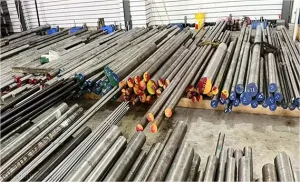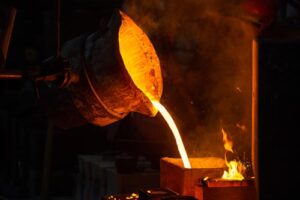Chromium, an essential alloying element in hot work tool steel, plays a pivotal role in shaping the material’s properties and performance. Hot work tool steel is renowned for its ability to withstand high temperatures and maintain its structural integrity in demanding industrial applications. The presence of chromium in these alloys significantly contributes to their heat resistance, wear resistance, and overall durability. In this comprehensive article, we will delve into the multifaceted role of chromium in hot work tool steel alloys, exploring its impact on composition, properties, and applications.
1. Introduction
Chromium is a critical alloying element in the world of hot work tool steel, where exceptional heat resistance and wear resistance are paramount. Understanding how chromium influences the composition and performance of these alloys is key to harnessing their full potential.
2. Hot Work Tool Steel: Composition and Characteristics
Alloying Elements
Hot work tool steel is formulated with a blend of alloying elements, including chromium, tungsten, molybdenum, and vanadium. These elements are carefully selected to enhance specific properties, making hot work tool steel suitable for high-temperature applications.
Heat Resistance and Toughness
Hot work tool steel exhibits remarkable heat resistance, allowing it to maintain its structural integrity even at temperatures exceeding 600°C (1112°F). This property is essential for industries like die casting and forging, where extreme heat is generated.
Wear Resistance
The wear resistance of hot work tool steel is another critical attribute, ensuring that molds and tooling maintain their precision and durability, even in abrasive environments.
3. The Chromium Factor
Chromium’s Influence on Alloy Structure
Chromium, when added to hot work tool steel, forms stable carbides that contribute to the material’s hardness and wear resistance. These carbides are dispersed throughout the steel matrix, enhancing its overall performance.
Enhancing Heat Resistance
One of chromium’s primary roles in hot work tool steel is improving heat resistance. Chromium’s presence helps in maintaining the material’s hardness and structural stability even at elevated temperatures.
Augmenting Wear Resistance
Chromium’s contribution to wear resistance is significant. It enhances the material’s ability to withstand abrasive wear, extending the lifespan of components and tooling.
4. Applications of Chromium-Enriched Hot Work Tool Steel
Die Casting
In die casting, where molten metal is injected into molds at high temperatures and pressures, chromium-enriched hot work tool steel ensures that the molds endure the extreme conditions and maintain dimensional accuracy.
Forging
Forging operations involve subjecting hot work tool steel to extreme temperatures. Chromium’s role in heat resistance is pivotal, ensuring the material’s durability and structural integrity.
Extrusion
Hot work tool steel is used in extrusion tooling for shaping materials like metals and plastics. Chromium’s contribution to wear resistance is crucial in maintaining precision during these processes.
Glass Manufacturing
The glass manufacturing industry relies on hot work tool steel for applications like glass blowing molds. Chromium’s presence ensures that these molds can withstand the high temperatures and abrasive nature of molten glass.
5. Challenges and Considerations
Balancing Chromium Content
Optimizing the chromium content in hot work tool steel is a delicate balance. Too much chromium can lead to brittleness, while too little may compromise heat and wear resistance. Alloy design requires careful consideration.
Optimizing Alloy Design
The alloy design process involves selecting the right combination of alloying elements, including chromium, to achieve the desired properties for specific applications. Tailoring the alloy ensures it meets the requirements of various industries.
6. FAQs
Frequently Asked Questions About Chromium’s Role in Hot Work Tool Steel Alloys
Q1. Can hot work tool steel be used without chromium?
While hot work tool steel can be formulated without chromium, the absence of this key alloying element would significantly reduce its heat and wear resistance, limiting its suitability for high-temperature applications.
Q2. Are there specific chromium-enriched hot work tool steel grades for different industries?
Yes, there are specific grades of hot work tool steel with varying chromium content and alloy compositions tailored to different industrial applications and operating conditions.

